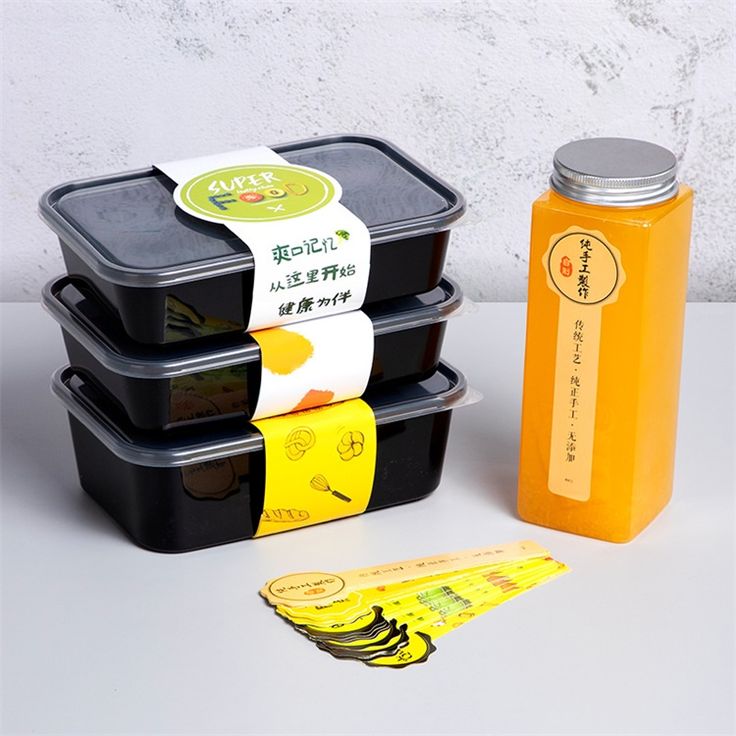Storing food safely for long periods is crucial for maintaining its quality and preventing spoilage. Proper storage techniques, including the use of custom food packaging sleeves, can extend the shelf life of food, reduce waste, and ensure that it remains safe to consume. This guide covers various methods to help you store food safely and effectively for extended periods.
Understanding Food Storage Basics
Proper food storage begins with understanding the basic principles that keep food safe and fresh. Temperature, humidity, light, and air exposure are critical factors influencing food spoilage. Perishable foods like dairy, meat, and fresh produce require different storage conditions compared to dry goods such as grains and legumes.
Temperature Control:
Keep your refrigerator below 40°F (4°C) and your freezer at 0°F (-18°C). This prevents the growth of bacteria that can spoil food or cause foodborne illnesses. Use a thermometer to monitor these temperatures regularly.
Humidity Levels:
High humidity levels can cause mold growth on certain foods, while low humidity can cause others to dry out. Use humidity-controlled drawers in your refrigerator to store fruits and vegetables. For dry goods, store them in a cool, dry place.
Light Exposure:
Light can degrade food quality, particularly for items like oils and spices. Store these in dark, opaque containers to extend their shelf life.
Air Exposure:
Air can introduce contaminants and cause oxidation, leading to spoilage. Use airtight containers for dry goods and vacuum-sealed bags for perishable items to minimize air exposure.
Have a Look: How To Fix errordomain=nscocoaerrordomain&errormessage=could not find the specified shortcut.&errorcode=4?
Utilizing Refrigeration and Freezing
Refrigeration and freezing are essential for preserving perishable foods. Understanding how to use your refrigerator and freezer effectively can significantly extend the shelf life of your food.
Refrigeration Tips:
- Store dairy products, meat, and fish in the coldest part of the refrigerator, usually the lower shelves.
- Use the crisper drawers for fruits and vegetables, adjusting the humidity settings as needed.
- Keep leftovers in airtight containers and label them with the date they were stored to ensure they are used within a safe timeframe.
Freezing Tips:
- Freeze food in portions that can be easily thawed and used, reducing waste.
- Use freezer-safe containers or bags to prevent freezer burn.
- Label each item with the date it was frozen to keep track of how long it has been stored.
- Blanch vegetables before freezing to preserve their color, flavor, and nutritional value.
Have a Look: What is Goku’s most serious moment in Dragon Ball, DBZ, GT, or Super (including movies)?
Storing Dry Goods Properly
Dry goods like grains, beans, pasta, and flour can be stored for extended periods if kept in the right conditions. Proper storage prevents pests, mold, and staleness.
Grains and Legumes:
- Store grains and legumes in airtight containers to keep out pests and moisture.
- Keep them in a cool, dark place to extend their shelf life.
- Consider using vacuum-sealed bags for long-term storage.
Flour and Baking Supplies:
- Store flour in airtight containers to prevent it from absorbing odors and moisture.
- Keep baking supplies like sugar and baking powder in a dry, cool place.
- Use food-grade buckets with tight-fitting lids for bulk storage.
Pasta and Cereals:
- Keep pasta and cereals in their original packaging or transfer them to airtight containers.
- Store them in a pantry or cupboard away from direct light and heat.
Have a Look: who owns dollar general store?
Preserving Fresh Produce
Fresh produce has a shorter shelf life, but proper storage can help extend its freshness. Different types of produce require specific storage methods.
Root Vegetables:
- Store root vegetables like potatoes, carrots, and onions in a cool, dark, and well-ventilated place.
- Avoid storing potatoes and onions together, as they can cause each other to spoil faster.
Leafy Greens:
- Keep leafy greens in the refrigerator, ideally in a humidity-controlled drawer.
- Wash greens before storing them, and wrap them in a damp paper towel to maintain moisture.
Fruits:
- Store fruits like apples and oranges in the refrigerator to extend their freshness.
- Keep bananas, tomatoes, and avocados at room temperature until they ripen, then transfer them to the refrigerator.
Have a Look: Best Places To Visit In Mexico In 2024
Using Food Sleeve Packaging for Extended Storage
Food sleeve packaging is a versatile and effective method for storing various types of food. It provides a barrier against moisture, air, and contaminants, helping to keep food fresh for longer.
Benefits of Food Sleeve Packaging:
- It protects food from exposure to air and moisture, reducing the risk of spoilage.
- It is ideal for storing items like deli meats, cheeses, and leftovers.
- The packaging is often transparent, allowing you to see the contents without opening it, which helps with inventory management.
How to Use Food Sleeve Packaging:
- Place the food inside the sleeve, ensuring there is minimal air left inside before sealing.
- Use a heat sealer or vacuum sealer to create an airtight seal.
- Label the package with the date and contents for easy identification.
Have a Look: Jimmy buffett net worth, lifestyle and updates in 2024
Canning and Preserving Methods
Canning and preserving are time-tested methods for extending the shelf life of food. These methods can be used for a variety of foods, including fruits, vegetables, meats, and jams.
Water Bath Canning:
- Suitable for high-acid foods like fruits, pickles, and tomatoes.
- Sterilize jars and lids before filling them with prepared food.
- Process the jars in a boiling water bath for a specified time to ensure a proper seal.
Pressure Canning:
- Necessary for low-acid foods like meats, beans, and some vegetables.
- Use a pressure canner to process jars at the recommended pressure and time to kill bacteria and spores.
Jams and Jellies:
- Use fresh, high-quality fruits for the best results.
- Cook fruits with sugar and pectin to achieve the desired consistency.
- Process jars in a water bath to seal them and extend their shelf life.
Have a Look: LSU Vs Kentucky Baseball
Fermentation and Pickling Techniques
Fermentation and pickling are ancient methods of preserving food that enhance flavor and nutritional value. These techniques rely on natural processes to extend the shelf life of various foods.
Fermentation:
- Commonly used for vegetables, dairy products, and beverages like kombucha.
- Use salt or a starter culture to promote the growth of beneficial bacteria.
- Store fermented foods in airtight containers in a cool, dark place.
Pickling:
- Involves preserving food in an acidic solution, usually vinegar or brine.
- Suitable for cucumbers, carrots, beets, and other vegetables.
- Store pickled foods in the refrigerator or process them in a water bath for shelf-stable storage.
Conclusion
Storing food safely for extended periods requires attention to detail and proper techniques. By understanding the basics of food storage, utilizing refrigeration and freezing, storing dry goods properly, preserving fresh produce, using food sleeve packaging, canning and preserving, fermentation and pickling, vacuum sealing, using root cellars, and employing airtight containers, you can significantly extend the shelf life of your food. These methods not only help in reducing waste but also ensure that you have access to safe and nutritious food at all times.







